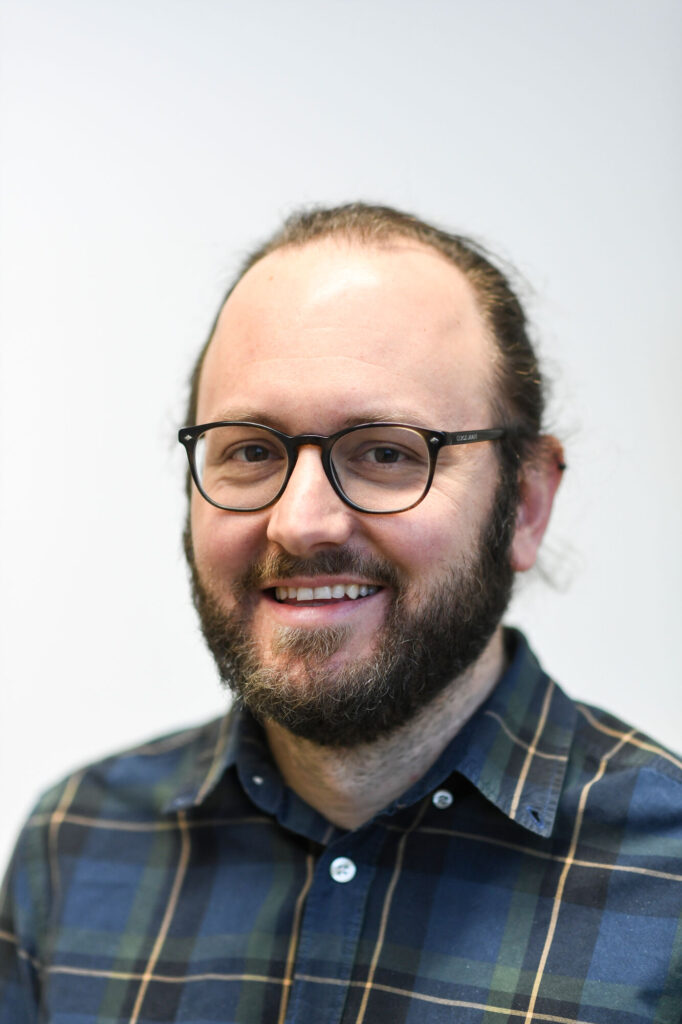Modelled from nature – Light-controlled bio-based OptoAssays can diagnose diseases more easily and affordably
Freiburg, 26/09/2024
A research team from the University of Freiburg and the INM – Leibniz Institute for New Materials in Saarbrücken has, for the first time, developed light-controlled tests to detect pathogens and other biomarkers. These OptoAssays not only mimic the behaviour of biological cells but also use their genetic programming.

SARS-CoV-2 rapid tests or pregnancy tests work on a similar principle. Depending on whether a specific protein or hormone is present, the test line changes the colour. In both cases, a lateral flow assay is used. This test works by having the sample fluid move sideways to display a result. This unidirectional movement of the liquid on the paper is generated through capillary forces, without any mechanical or electrical assistance. For more complex tests, this detection method is unsuitable. What is needed here are assays that allow bidirectional control of fluids, meaning the ability to transport the fluid into and back out of the test system. So far, this has required expensive and wear-prone pumps.
Researchers led by Dr. Can Dincer from the Department of Microsystems Engineering (IMTEK) at the University of Freiburg and the INM have now found a way to design complex tests without these pumps. In the latest issue of Science Advances, they present biological assays where mechanical pumps are replaced by light-emitting diodes (LEDs). These OptoAssays enable the bidirectional, light-induced movement of biomolecules and the reading of test results without additional mechanical washing steps.
Light on – Light off: The test result is ready
An OptoAssay uses a sender and receiver area, which are brought into contact by adding the test fluid. The sender area contains a special protein that reacts to light. It can bind or release certain molecules depending on the type of light it captures. When an LED emits red light at a wavelength of 660 nanometres, the molecules bind to the protein. When the light switches to dark red, with a wavelength of 740 nanometres, the molecules detach from the protein. The receiver area contains antibodies specifically designed to detect and capture the target protein in the test fluid.
Nature as the inspiration for the method
The inspiration for this method came from how plants respond to light. Every cell has a nucleus where its genetic code is stored. The DNA contains the cell’s “programme,” instructing the cell what to do. To activate or deactivate this programme, certain proteins must move into and out of the nucleus. In the cytoplasm, the area surrounding the nucleus, there is a photoreceptor that can be controlled by light. When it receives red light, it activates and binds to a binding protein, which transports the photoreceptor into the nucleus. This, for example, starts a growth programme in the nucleus. When the light wavelength switches to dark red, this binding is interrupted.
But the connection to nature goes beyond just the method. The photoreceptors in the OptoAssay are also made from natural materials. Genes containing the information for the plant cell’s photoreceptor are extracted from the plant and inserted into bacteria. These bacteria then produce the photoreceptor and the binding protein used in the OptoAssay. The originally mechanical components are thus replaced by sustainably produced natural components. The researchers see great potential for the use of OptoAssays in point-of-care diagnostics, i.e., outside the lab, similar to lateral flow assays. “In combination with smartphones, OptoAssays could eliminate the need for external flow control systems like pumps and signal readout devices in the future, paving the way for new diagnostic devices that allow affordable and straightforward analyses directly on-site, even in resource-limited settings.” says Dincer.
Further information
- Original publication: Urban, Nadine; Hörner, Maximilian; Weber, Wilfried; Dincer, Can (2024): OptoAssay-Light-controlled dynamic bioassay using optogenetic switches, in: Science Advances, Vol. 10, Issue 39. DOI: 10.1126/sciadv.adp0911
- The study was funded by the German Research Foundation (DFG) under the project number 404478562 and as part of the Cluster of Excellence CIBSS – Centre for Integrative Biological Signalling Studies.